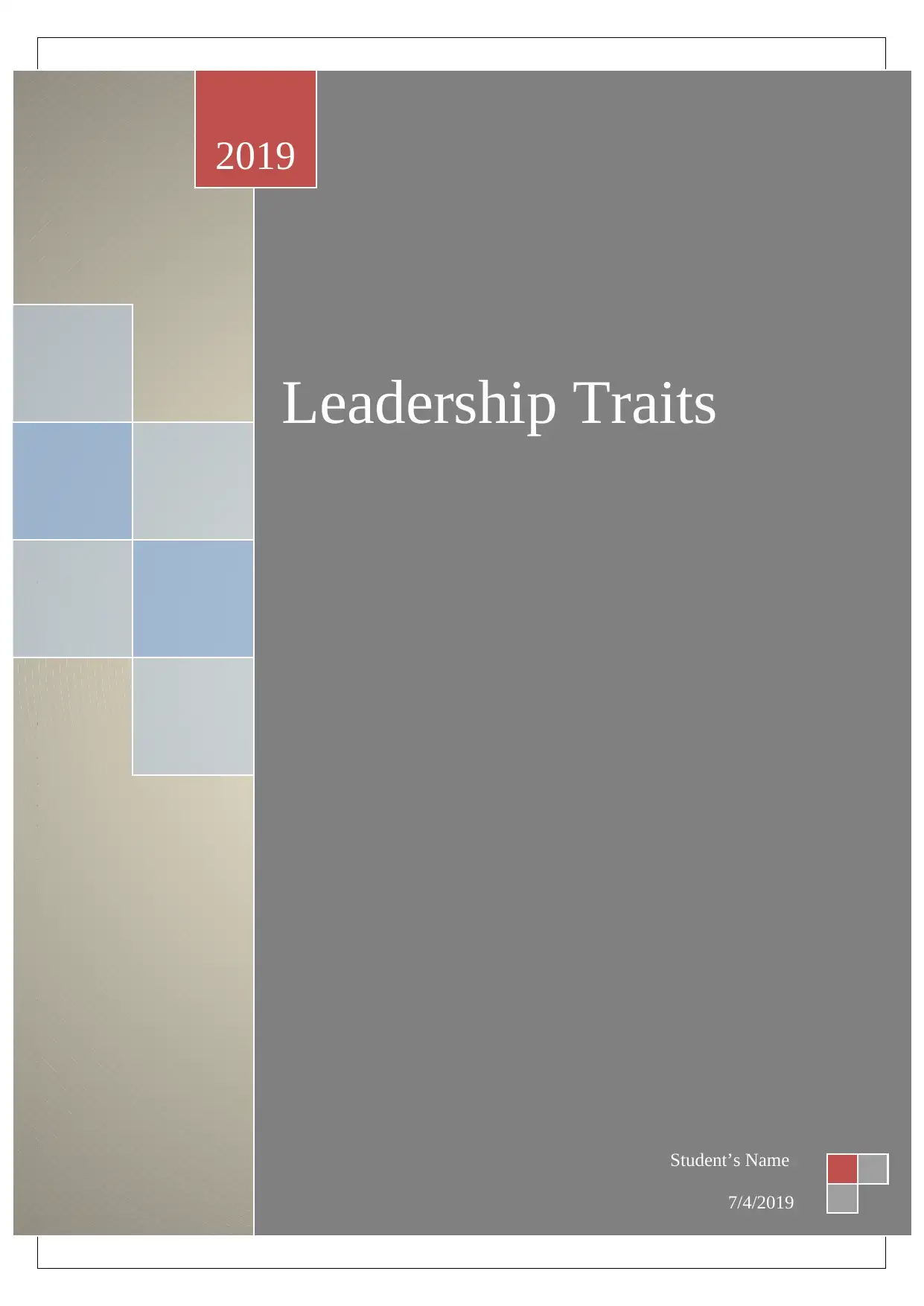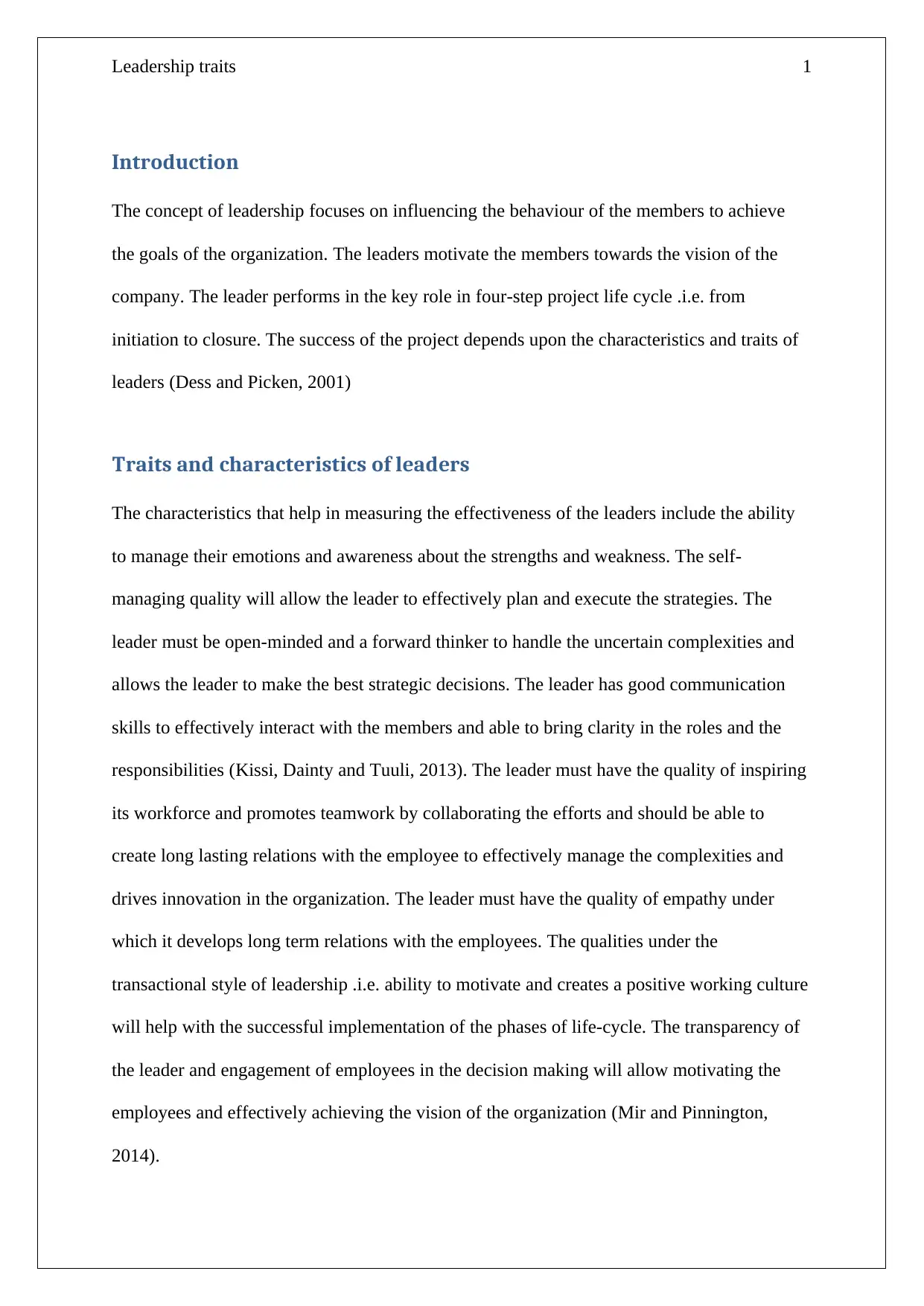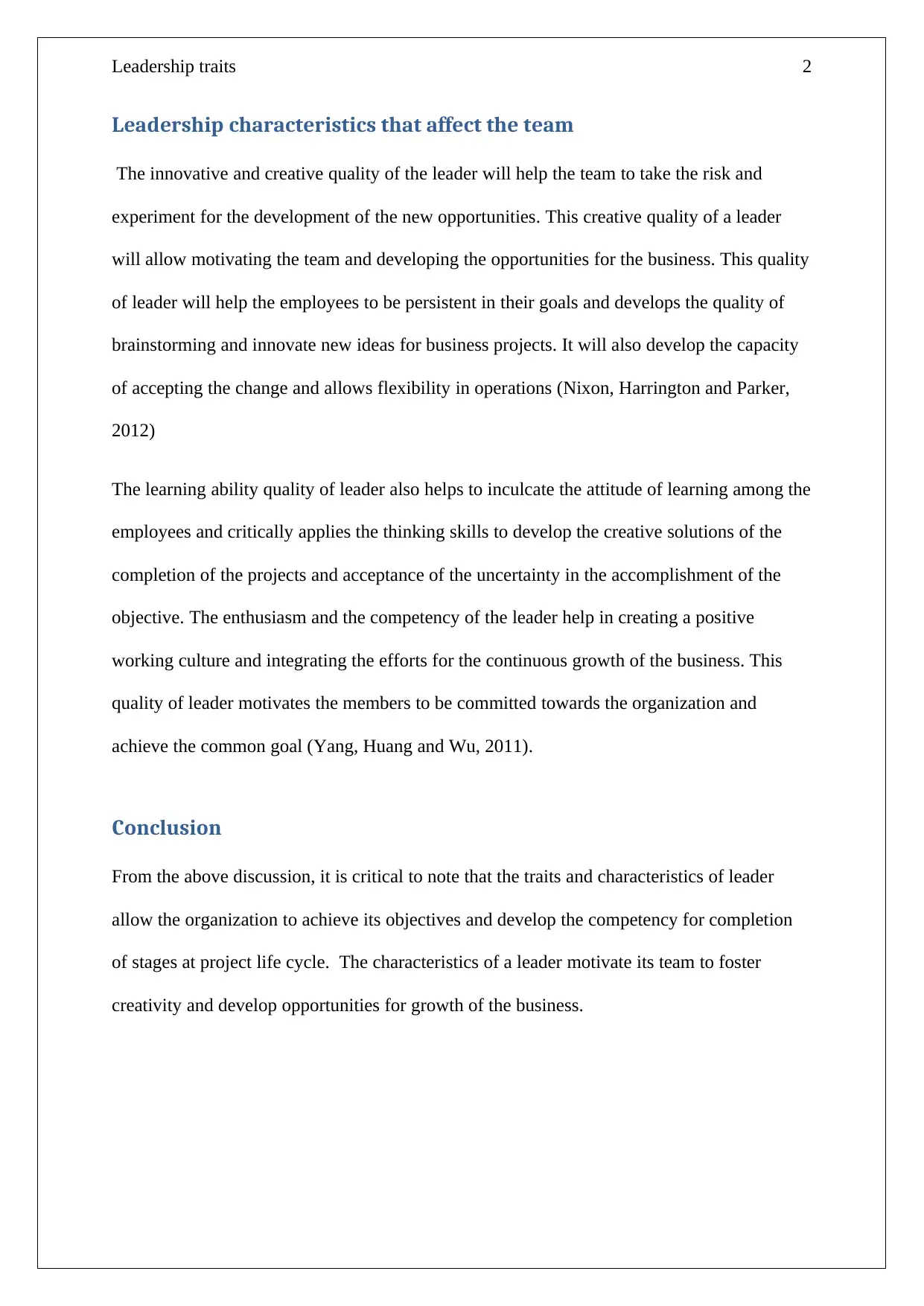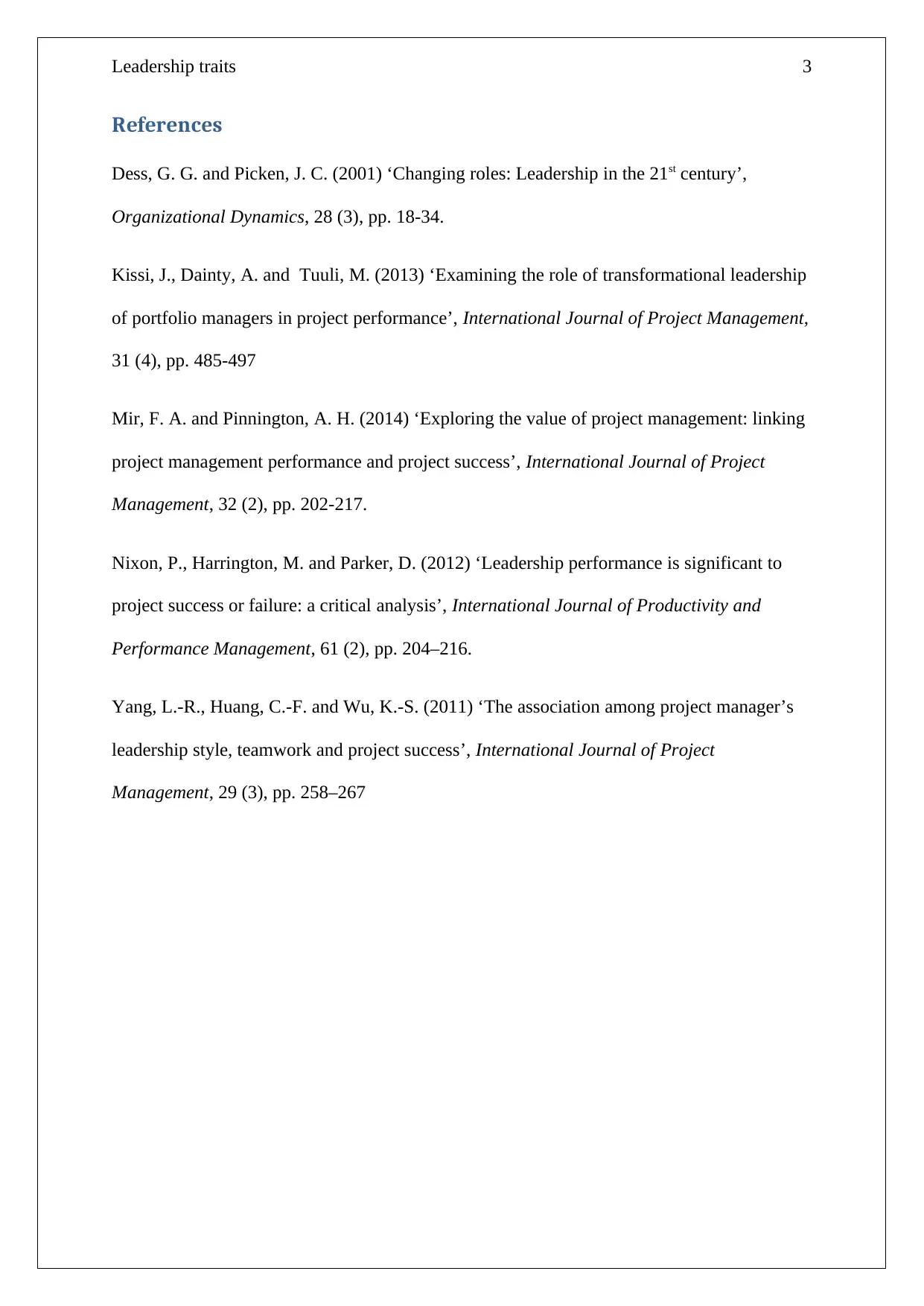Leadership Traits and Characteristics for Project Life Cycle Success
VerifiedAdded on 2022/11/25
|4
|797
|349
Report
AI Summary
This report analyzes leadership traits and characteristics crucial for project success across all phases of the project life cycle, from initiation to closure. The analysis emphasizes the importance of leaders' ability to manage emotions, communicate effectively, inspire teamwork, and foster innovation. Key qualities include open-mindedness, forward-thinking, and the capacity to create lasting relationships with employees. The report also explores how leadership traits such as creativity, learning ability, and enthusiasm contribute to a positive work culture and team performance, even after the project's completion. The study references academic sources and highlights the critical role of leadership in achieving organizational objectives and developing project management competencies. Effective leaders inspire creativity and facilitate opportunities for business growth.
1 out of 4








![[object Object]](/_next/static/media/star-bottom.7253800d.svg)